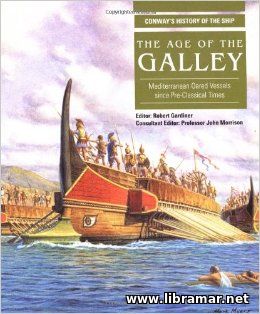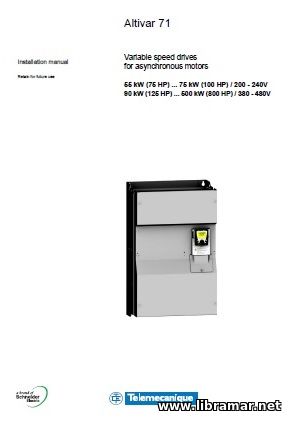History of the Oil Industry

Ever since man started to dig holes in the ground, searching for salt, fresh water and minerals, there has been a continuous development. In digging technology, the first wells were dug by hand and as one got deeper, the wells were lined with rocks and wood to prevent them from collapsing.
When entering the oil-bearing zones, fumes and gases started to interfere with “digging”. It became necessary to drill rather than dig and this was the start of the oil drilling industry.
All types of drilling, whether it is for water, minerals or oil, have to abide the laws of physics. It is therefore no coincidence that most of the drilling techniques developed in the different areas of the world, are quite similar. Although a mining rig looks very different from and oil drilling rig, they perform the same function, namely “drilling a usable hole”. Drilling for oil and gas successfully is a process that requires a number of skills and a lot of advanced equipment. As the drilling process becomes more complicated, the drilling tools and the way they are used, must also be updated.
The oil industry began over five thousand years ago. In the Middle East, oil seeping up through the ground was used in waterproofing boats and baskets, in paints, lighting and even for medication.
Whale oil has been used in more recent times as a source of light in houses. However, the high premium for whale oil decimated whale populations and as their numbers dropped the prices rose further.
The demand for oil was now far higher than the supply. Many companies and individuals were looking for an alternative and longer lasting source of what would later become known as black gold. Apart from a brief period of coal oil, the answer came with the development of drilling for crude oil. Land oil wells were first and as demand continued to grow exploration companies began to look below the sea bed.
The first oil well structures to be built in open waters were in the Gulf of Mexico. They were in water depths of up to 100m and constructed of a piled jacket formation, in which a framed template has piles driven through it to pin the structure to the sea bed. To this, a support frame was added the working parts of the rig such as the deck and accommodation. These structures were the fore-runners for the massive platforms that now stand in very deep water and in many locations around the world, including the North Sea. How did they know to look for oil beneath the North Sea? In 1959 the massive Groningen land gas field was discovered in the Netherlands. Geologists estimated that the same rock formations might be found beneath the southern North Sea basin in UK  waters. They were right and gas was discovered of the English East Coast in the 1960s.
waters. They were right and gas was discovered of the English East Coast in the 1960s.
Clues around the coast of Greenland gave Geologists the idea that there may be oil and gas around Scottish waters.
There have been land oil wells in Europe since the 1920s. It wasn't until the 1960s that exploration in the North Sea really begun, without success in the early years. They finally struck oil in 1969 and have been discovering new fields ever since. The subsequent development of the North Sea is one of the greatest investment projects in the world.
The development of the offshore oil industry in hostile waters has been made possible by many achievements comparable with the space industry. Many fields are located far from land and they are getting further away. New fields are being explored in ever deeper and wilder waters, like the Atlantic Ocean west of Scotland.
After the North Sea UK disaster in 1988 when on 6 July, the North Sea Piper Alpha oil platform caught fire and exploded killing 167 of the 228 on board. The industry and the government waited until 1990 for the publication of the Cullen report. Lord Cullen discovered that the main cause of the explosion was the failure in the operation of the permit to work system, for which there are now very strict guidelines. This system is used to over-sea work, preventing potentially dangerous work being carried out. It also prevents dangerously conflicting work being carried out by a combination of workers and it ensures that proper laid down procedures are adhered to. The report brought about many changes and a journey towards much greater safety awareness, procedures and regulations.
ensures that proper laid down procedures are adhered to. The report brought about many changes and a journey towards much greater safety awareness, procedures and regulations.
Today the industry is very safety conscious. It has to be for its very survival. For example, the safety record of an exploration rig can make a big difference to whether or not an oil company will want to hire it. Oil companies cannot afford to have their name associated with accidents.
When you first arrive, you are given a tour of the installation, detailing all safety aspects including fire extinguishers, emergency muster stations, lifeboat stations and procedures. You will be introduced to the rig safety programme.
Everyone attends weekly safety meetings and daily pre "tour" meetings. The weekly meeting is an in-depth look at industry wide safety news and other safety related issues on the rig. Companies share safety information with other companies throughout the industry. This helps to avoid repeated incidents. A fire and boat drill are often held on the same day which involves a mock fire and a mock abandon the rig exercise. The pre-tour meeting is usually a description of the work carried out when you are off shift, the work you will be doing, the work others are currently doing that may affect you and any other relevant issues of the day.
Accidents do happen as in every industry. However, statistics show that with the massive improvements in offshore safety procedures, you now have a higher chance of having an accident if you work on a building site than you do on an oil rig.
 Petroleum or crude oil is an oily, flammable liquid that occurs naturally in deposits, most often found beneath the surface of the earth. Over millions of years, plant and animal remains fall to the floor of shallow seas. As the seas recede, the plant material is covered by sediment layers, such as silt, sand, clay, and other plant material. Buried deep beneath layers of rock, the organic material partially decomposes, under an absence of oxygen, into petroleum that eventually seeps into the spaces between rock layers. As the earth's tectonic plates move, the rock is bent or warped into folds or it "breaks" along fault lines, allowing the petroleum to collect in pools. Man was not unfamiliar with crude oil. In the Middle East, seepages and escaping petroleum gases burned continuously, giving rise to fire worship. It was also used for building mortar, roads, in a limited way for lighting, but was primarily used for healing everything from headaches to deafness. It was also used in war, for obvious reasons.
Petroleum or crude oil is an oily, flammable liquid that occurs naturally in deposits, most often found beneath the surface of the earth. Over millions of years, plant and animal remains fall to the floor of shallow seas. As the seas recede, the plant material is covered by sediment layers, such as silt, sand, clay, and other plant material. Buried deep beneath layers of rock, the organic material partially decomposes, under an absence of oxygen, into petroleum that eventually seeps into the spaces between rock layers. As the earth's tectonic plates move, the rock is bent or warped into folds or it "breaks" along fault lines, allowing the petroleum to collect in pools. Man was not unfamiliar with crude oil. In the Middle East, seepages and escaping petroleum gases burned continuously, giving rise to fire worship. It was also used for building mortar, roads, in a limited way for lighting, but was primarily used for healing everything from headaches to deafness. It was also used in war, for obvious reasons.
The "Read Later" function allows you to add material to this block with just one click. Just click on the icon and read the articles that interest you at any convenient time.


